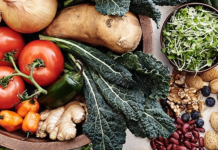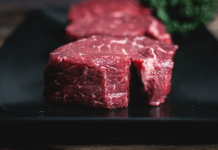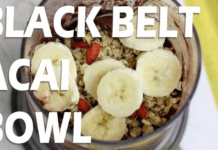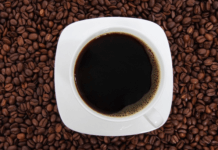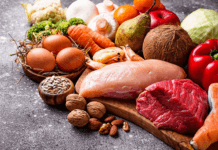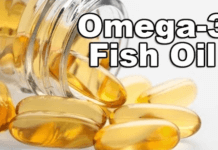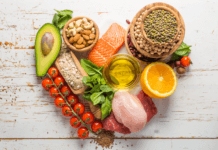Currently, the vegan diet is gaining a growing number of supporters. Not only among amateurs but also professional athletes, regardless of the discipline, they practice. However, probably anyone who does sports on a vegan diet heard the question where they get proteins from more than once. It’s high time to deal with the myths associated with plant-based diets in sports. And answer the question about whether vegetarians and vegans can engage in martial arts/combat sports.
Vegan diet For BJJ and MMA
Why do athletes abandon animal products, supposedly the best protein source in their menu?
For some, a vegan diet is an ethical choice, disagreeing with the modern exploitation of animals. For others, veganism is the best way to prevent civilization diseases and the most effective weapon in the fight for a strong and healthy body. All of them, for whatever reason, are living proof that we don’t need animal protein to achieve sporting success. Even at a professional level!
Top 5 basic principles of healthy eating for properly balancing your vegan diet
1. Eat variously. Include in your menu the widest possible range of plant products: vegetables, fruits, legumes, groats, cereals as well as nuts, and seeds. Try to consume as many unprocessed products as possible. You do not have to completely avoid the “ready” products available in stores, but they shouldn’t form the basis of your diet.
2. To ensure the right amount of calcium and iron, eat green and leafy vegetables (e.g. broccoli, Brussels sprouts, kale) and legumes (e.g. soybeans, beans) daily, and add ground poppy seeds to the shakes (see the last point) or sesame. To increase the absorption of iron found in plants, combine them with products rich in vitamin C. Do not drink meals with coffee, tea, and alcohol – they limit the absorption of many elements. If you use calcium-fortified plant milk, shake the carton before use so that calcium does not settle on the bottom of the packaging.
3. Remember about healthy fats! If you do not want to risk disturbances in the absorption of some vitamins and microelements and a decrease in testosterone levels, you should not limit fat in your diet to less than 20% of the energy obtained. To avoid the above-mentioned problems, include nuts, seeds, olives and avocados in your daily menu. To provide your body with essential fatty acids from the omega-3 group, eat 1 tablespoon of freshly ground linseed every day. If you have easy access to algae, include them in your diet, and if not, consider DHA supplementation.
4. Supplement vitamin B12, and in the autumn and winter also vitamin D. Deficiencies of these vitamins can occur in virtually anyone, regardless of the diet used, but people on plant diets are particularly vulnerable. Fortunately, a whole range of cheap products is available on the market that will allow you to ensure their appropriate level. For vitamin B12 it is 100 mcg per day, while for vitamin D from 800 to 2000 IU per day depending on body weight.
5. Make friends with the blender. You don’t always have time to prepare a complex dish for yourself? Or maybe you have no idea what to do with all the green-leafed vegetables, seeds and grains we recommend? No problem, use a blender. Thanks to it, in a few minutes you will prepare healthy and very nutritious vegetable shakes. Its daily consumption will allow you to easily balance your diet, even when you are busy. As the basic ingredients of the sheik, use water or vegetable milk, raw green leafy vegetables (e.g. a large handful of kale or baby spinach) and fruit. Add to this a tablespoon of ground linseed, poppy seeds or sesame, and a scoop of vegetable protein supplement. Viola! You have received a tasty, healthy and nutritious vegan meal.
Protein and vegan diet for BJJ and MMA
It is commonly believed that the only wholesome sources of protein are meat, eggs, and dairy products. Nothing could be more wrong. All exogenous amino acids that our body needs are found in plant products. Soy (you don’t have to be afraid of it, the conviction that it’s bad for men is a myth!) and quinoa even have a similar amino acid profile to the reference one. With other plants, it looks a bit less perfect. But by properly combining them in dishes, you can get a full set of amino acids in the right proportions. It is not at all complicated and it often comes to us naturally. E.g. when combining beans with corn or pasta with pods in a meal.
It is also worth emphasizing that many plant products have a very high proportion of protein in total calories, often higher than in the famous “steaks”. High-protein vegetables, in addition to legumes (soybeans, lentils, chickpeas, various types of beans, broad beans, etc.), are spinach, broccoli, and Brussels sprouts. Spinach in 100 calories contains about 28% protein, steak 20%.
Of course, not only the percentage of protein per calorie but also the corrected digestibility index of its amino acids (PDCAAS) is important for assessing the protein source. However, also in this category, a lot of plants look quite good. For soybeans, this ratio is 91% (the same as for chicken meat), for different bean varieties from 60% to 70%, for green lentils 65%. Composing a high-protein meal on a plant diet is not a major challenge. However, if you still have a problem with providing the body with the amount of protein you need, you can always use plant protein nutrients.
A very easy way to increase protein in a vegetable meal is to add tofu to it. Tofu is a traditional Asian cottage cheese obtained from soy milk. It is rich in exogenous amino acids, calcium, iron, zinc, and magnesium. Its big advantage is that in its natural form it is basically devoid of its own taste, but it absorbs the taste and smell of other products very easily. So you can also add it to sweet, salty, spicy dishes, etc. Properly seasoned, it works great as an addition to pastes, sauces, stuffings, and cocktails. There are also many flavored versions of tofu on the market – pickled, smoked, herbal. These, without any additional treatments, you can put on a sandwich or add as an ingredient to the burrito.
Vegetable protein supplements
A properly balanced vegan diet can provide all the macronutrients needed by the body in the proportions recommended even for bodybuilders. Unfortunately, not all of us have the time and the opportunity to prepare several full-fledged meals every day. Ensuring the right amount of carbohydrates and fats is not a big problem, even when we are always busy. All you have to do is have a variety of fruits, nuts, and raisins on hand. However, providing the recommended amount of protein for our weight can sometimes be troublesome. Plant protein nutrients are helpful in these situations.
First of all, you should be interested in soy protein. It has a very good level of absorption and an almost standard amino acid profile. It is also much cheaper than animal alternatives. However, if you are allergic to soy, consider slightly more expensive nutrients. That are mixtures of various plant proteins, e.g. from hemp, peas, and rice. The combination of plant proteins with different amino acid profiles allows achieving a close standard aminogram, which translates into high efficiency of such mixes.
You need less protein than you think
Almost everyone practicing strength disciplines or martial arts sooner or later is thinking about increasing their protein intake. However, before you decide to buy a protein nutrient, make sure you need it. Studies show that the belief among gym goers that the increase in muscle mass is only possible after consuming at least 2 grams of protein per kilogram of body weight is a myth.
Particularly meaningful in this regard are the analysis carried out by the team of Professor C. Castaned, in which a group of people with chronic renal failure was subjected to strength training. This disease requires patients to drastically reduce their protein intake. During the study, which lasted twelve weeks, these people consumed no more than 0.6 grams of protein per kilogram of body weight. Which is several times lower than recommended by bodybuilding “specialists”. Despite such low protein intake in the training group, there was an increase in muscle strength by 28%. In the control group, which used the same diet but did not undergo strength training, all these parameters deteriorated by a dozen or so percent. The conclusion of this study is simple. After exceeding a certain minimum level of protein, good strength training is more important for weight gain than the amount of protein consumed.
Does this mean that active people do not have to worry about the amount of protein in their diet at all? No. What is sufficient for weight gain may not be optimal. That is why most reputable sports centers recommend people intensively training higher protein intake, at the level of 1.2-1.7 grams of protein per kilogram of body weight. At the same time, they emphasize that the more experienced in training someone is, the better he uses the amino acids provided with food. This means that advanced people should aim at the lower value of these ranges and beginners in the upper one.
Leaving examples: Nick and Nate Diaz
The Diaz brothers are well-known figures in martial arts, competing in the UFC competition on a daily basis. Both have been using the vegan diet for years. Nate became interested in MMA for his brother’s case. For the same reason, he switched to a plant-based diet and dumped all animal products from the menu. As he claims, it allowed him to perform faster and more intense workouts. Nick is vegan for over half his life. It does not bother him to fight and win in the brutal formula of contact fights.
The Diaz brothers were further motivated by the success of other vegan fighters such as McDanzig and James Wilks. Nate has scored 11 professional wins so far, forcing opponents to surrender, 5 times won by knockout. Looking for new challenges, Nick also took part in the triathlon, winning a high, 6th place in his age category.
“A plant-based diet helps me not feel fallen when I have to train all week” – Nate Diaz
If not fan of these kind of diet check some other options like Keto diet, Gracie diet, Paleo diet or intermittent fasting way of eating

